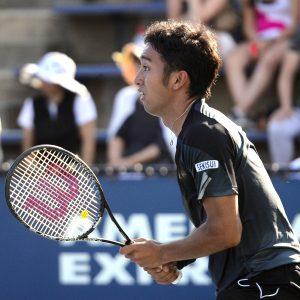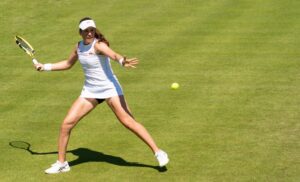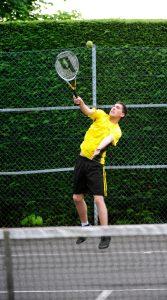We may earn money or products from the companies mentioned in this post.
Brief Overview of Tennis Rules and Regulations

Understanding the rules of any sport is crucial for both players and spectators Tennis is no exception With its unique scoring system, specific court dimensions, and various gameplay regulations, knowing the ins and outs of tennis rules enhances your appreciation and enjoyment of the game
The Importance of Understanding the Game Rules
Tennis rules serve as a foundation for fair play and ensure that all participants compete on an even playing field By familiarizing yourself with these rules, you’ll be able to understand why certain decisions are made during matches, which can greatly enhance your overall experience as a fan or player
The Role of a Serve in Starting a Point
In tennis, every point starts with a serve The server stands behind the baseline on one side of the court and aims to hit the ball into their opponent’s service box diagonally across from them A successful serve initiates the rally, where both players volley back and forth until someone fails to return the ball within the boundaries
Purpose of This Blog Post

This blog post aims to clarify one common question in tennis: where exactly must a serve land to be considered fair? Additionally, it will address other frequently asked questions related to serving in order to provide readers with a comprehensive understanding of this important aspect of the game
Clarifying Serve Fairness
One key aspect when serving in tennis is ensuring that your shot lands within the prescribed boundaries To be considered fair, your serve must land within both sidelines (the lines running parallel to each side) and between two additional lines called service lines These service lines extend from each sideline towards the net at right angles
Addressing Common Questions About Serving
Aside from understanding where a serve must land, tennis players often have other questions related to serving This blog post will address common concerns such as the consequences of a fault serve, when a let is called, and the importance of mixing up your serves to keep your opponent guessing
Essential Elements of a Legal Tennis Serve

Mastering the art of serving in tennis is crucial for any player looking to gain an advantage on the court It’s not just about hitting the ball over the net; a legal tennis serve requires attention to detail and proper execution Let’s dive into the essential elements that make up a solid serve
Stance and Position Behind the Baseline
When preparing for your serve, your stance and position behind the baseline are vital factors that can greatly impact your shot To start off on the right foot, you need to stand within the correct service box, which ensures that your serve is valid
In addition to standing in the right area, proper foot positioning plays a key role in generating power and accuracy in your serve You want to have a stable base by placing your feet shoulder-width apart, allowing for optimal balance and weight transfer throughout your motion
Toss and Ball Contact
The toss and ball contact are arguably two of the most critical aspects of a successful tennis serve Without a consistent toss, it becomes challenging to time your shot effectively Ensure that you develop a reliable tossing technique that places the ball in an ideal position for striking
Once you’ve mastered your toss, focusing on how you strike the ball becomes essential The racket’s frame or strings should make clean contact with the ball at its sweet spot—this is where power and precision come together harmoniously
Target areas for a legal serve in singles and doubles matches

Singles match target area
In a singles match, the target area for a legal serve is crucial for gaining an advantage over your opponent The court is divided into two diagonal service boxes which play a vital role in serving strategies
1 Diagonal service boxes explained
The court’s right service box is used for serving during odd points, while the left service box is utilized during even points This strategic placement ensures that players have equal opportunities to exploit their opponents’ weaknesses on both sides of the court
2 Center, sideline, and baseline boundaries
When serving in a singles match, it’s essential to consider the centerline and sideline boundaries The serve must land within these boundaries to be considered legal Additionally, the serve should not go beyond the baseline boundary at the back of the court
Doubles match target area
In doubles matches, there are additional considerations when it comes to targeting areas for legal serves due to the expanded playing space and presence of alleys
1 Additional space for doubles play: alleys
Doubles matches offer more room for players as compared to singles matches through the inclusion of alleys on either side of the court These alleys pose opportunities and challenges when it comes to serving effectively
a) How alleys affect legal serves
The presence of alleys means that players must be mindful of their serves landing within the correct boundaries, including avoiding hitting into their opponents’ alley space which could result in fault or double fault
b) Avoiding opponents’ court area
Serving strategically in doubles means aiming to place the ball away from the opponents’ court area By targeting areas that force opponents into difficult positions, players can gain a tactical advantage and set themselves up for a strong start to the point
2 Service rotation system in doubles play
In doubles matches, there is a specific service rotation system that players must adhere to This ensures fairness and equal opportunities for all team members to serve throughout the match Following this system allows each player to contribute their skills effectively and maintain a balanced playing field
Common questions and misconceptions about tennis serves

When it comes to tennis serves, there are several common questions and misconceptions that often arise Let’s dive into some of these topics to dispel any confusion and shed light on the rules and regulations surrounding this crucial aspect of the game
Can you touch the baseline during your serve?
One common misconception is whether players can touch the baseline during their serve The answer is yes, players are allowed to touch or step on the baseline as long as they do not go beyond it before making contact with the ball
-
Foot faults explained:
A foot fault occurs when a player steps over or touches the baseline before striking the ball This results in a fault, which means the serve does not count -
Penalties for foot faults:
If a player commits multiple foot faults during a match, penalties may be imposed, such as warnings, point deductions, or even disqualification depending on the severity of the violation
What happens when you hit an opponent with your serve?
If you accidentally hit your opponent with your serve, there are specific rules governing such situations:
-
Rules about hitting players inside or outside their respective court areas:
If your serve hits an opponent who is within their respective court area (singles or doubles), it is considered a let However, if they are outside their designated area (eg, standing too close to the net), it may result in a fault or even loss of point -
Possible outcomes: let, fault, or point awarded:
In most cases where an opponent is hit by a serve, a let is called This means the serve is replayed without any penalty However, if it is determined that the opponent was deliberately obstructing or interfering with the serve, a fault may be awarded to the server or even a point to their opponent
How many chances do you have to make a legal serve?
When it comes to making legal serves, players typically have two chances:
-
First vs second serves:
The first serve is an opportunity to start the point, and players get one chance to make it within the boundaries of the service box If they miss this first serve, they have a second chance known as the second serve -
Double-fault consequences:
If a player fails to land their second serve within the service box or commits another fault after missing their first serve, it results in a double fault In such cases, their opponent automatically wins the point
What is a let serve?
A let serve occurs when certain conditions are met:
-
Definition and conditions for a let serve:
A let occurs when the ball touches any part of the net during a legal serve and still lands within the boundaries of the service box It does not count as either a fault or point won by either player, and the server gets another opportunity to make a valid serve -
How to proceed after a let occurs:
When a let occurs, play stops momentarily, and both players return to their respective positions for another attempt at serving or returning
These clarifications aim to provide insights into common questions and misconceptions regarding tennis serves By understanding the rules and regulations, players can ensure fair play and enjoy the game to its fullest extent
Conclusion

After exploring the various aspects of legal serves in tennis, it is clear that serving plays a crucial role in determining the outcome of a match By adhering to the rules and regulations set by the International Tennis Federation, players can ensure that their serves are fair and valid
Summary of Key Points
Throughout this article, we have discussed several essential points regarding legal serves in tennis:
- The serve is the starting shot of every point and must be executed within specific boundaries
- A server must stand behind the baseline and serve diagonally into the opponent’s service box
- The ball must be struck below waist level and hit with an underhand or overhand motion
- Serves should not impede or distract the receiver in any way
- Foot faults occur when a server steps on or over the baseline before making contact with the ball
Encouragement to Practice & Improve Serving Skills
To become a formidable force on the tennis court, it is vital to dedicate time and effort to improving your serving skills The serve is not only an opportunity to gain an advantage but also a chance to display your technique and finesse
Consider incorporating these tips into your practice sessions:
-
Focus on accuracy:
Work on consistently hitting your desired target area within the service box This will increase your chances of winning points and putting pressure on your opponents -
Vary your pace and spin:
Develop different types of serves, such as flat serves, slice serves, or kick serves This variety will keep your opponents guessing and make it harder for them to return your serve effectively -
Experiment with different ball toss heights:
Adjusting the height of your ball toss can help you find the optimal point of contact and generate more power or spin on your serves -
Seek guidance from a coach:
Working with a qualified tennis coach can provide valuable insights and personalized feedback to help you refine your serving technique -
Mental preparation:
Develop a pre-serve routine that helps you focus, relax, and visualize successful serves Mental preparation is just as important as physical execution
Becoming proficient in serving requires practice, dedication, and a willingness to continuously improve By honing your skills in this area, you can gain a significant advantage over your opponents and elevate your overall game
Useful Links

Tennis Serving Rules 101
How to Play Tennis
Pickleball Overview – Santa Fe Tennis and Swim Club
The tennis court explained | Fitness
The Quick Guide to Tennis Rules for Beginners
Padel Rules
What is out of bounds in tennis?
General Rules of the Game of Pickleball
2021-rules-of-tennis-english.pdf
Tennis Court Dimensions: Every Measurement That Matters
Tennis Rules for Beginners
What Do Tennis Court Lines Mean? Unraveling the Mystery
Tennis Court Explained with Diagram Labeled …
Basic tennis rules pdf
Padel Rules
Tennis Rules: Guide to Scoring & Tennis Basics
PICKLEBALL RULES
Pickleball 101: Learn the Game
Official Rules of Table Tennis
5 Service Rules You Need to Know






